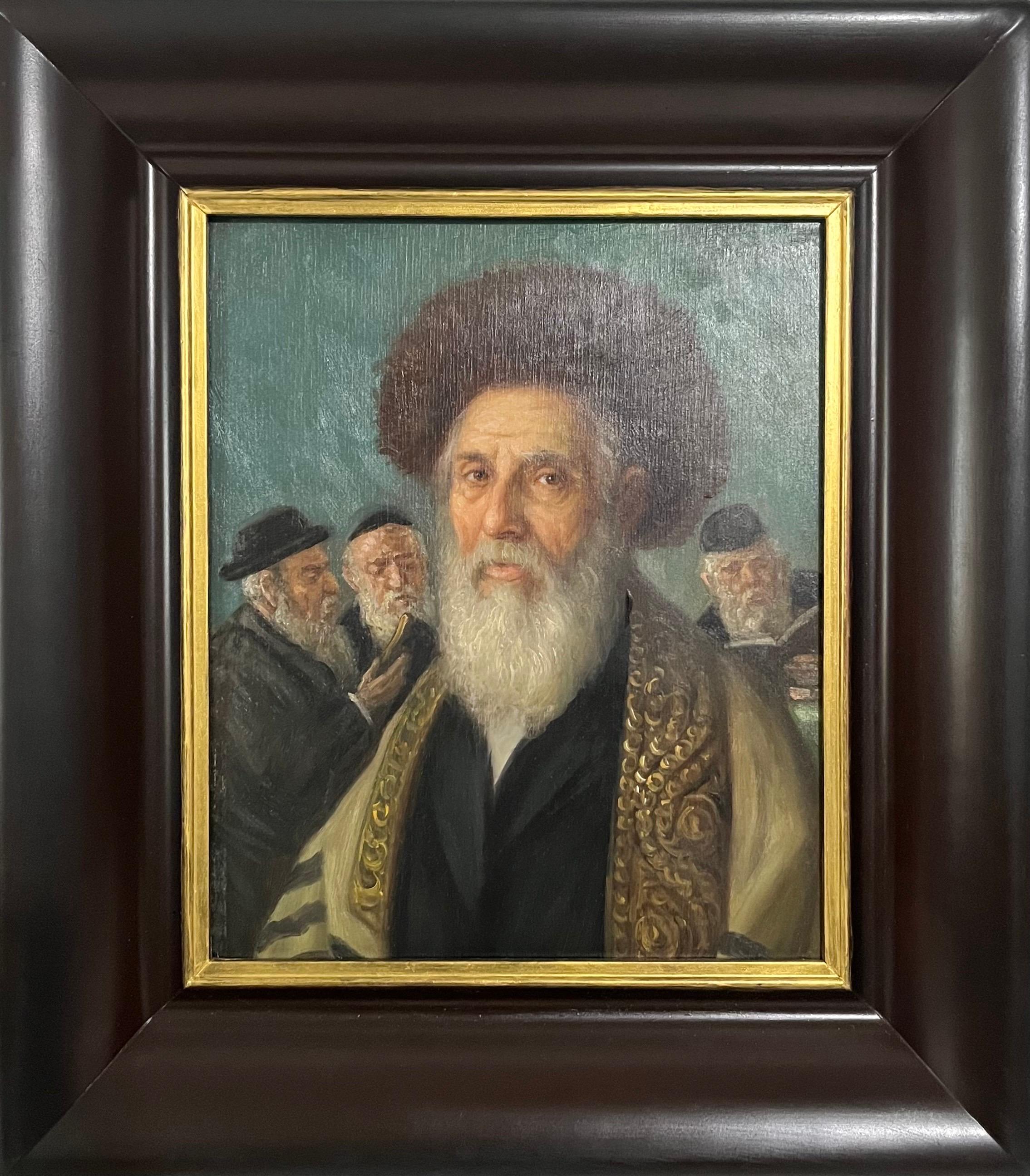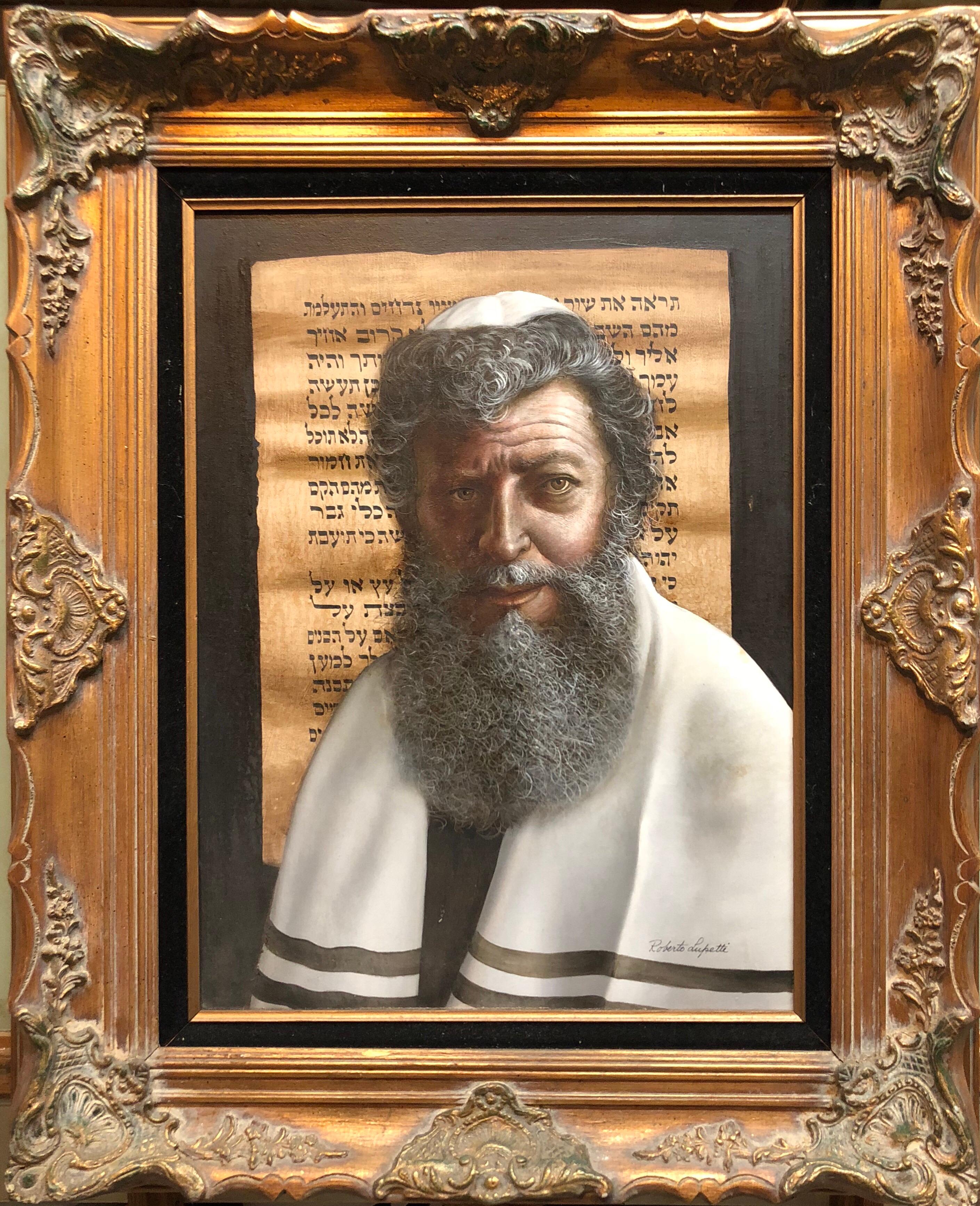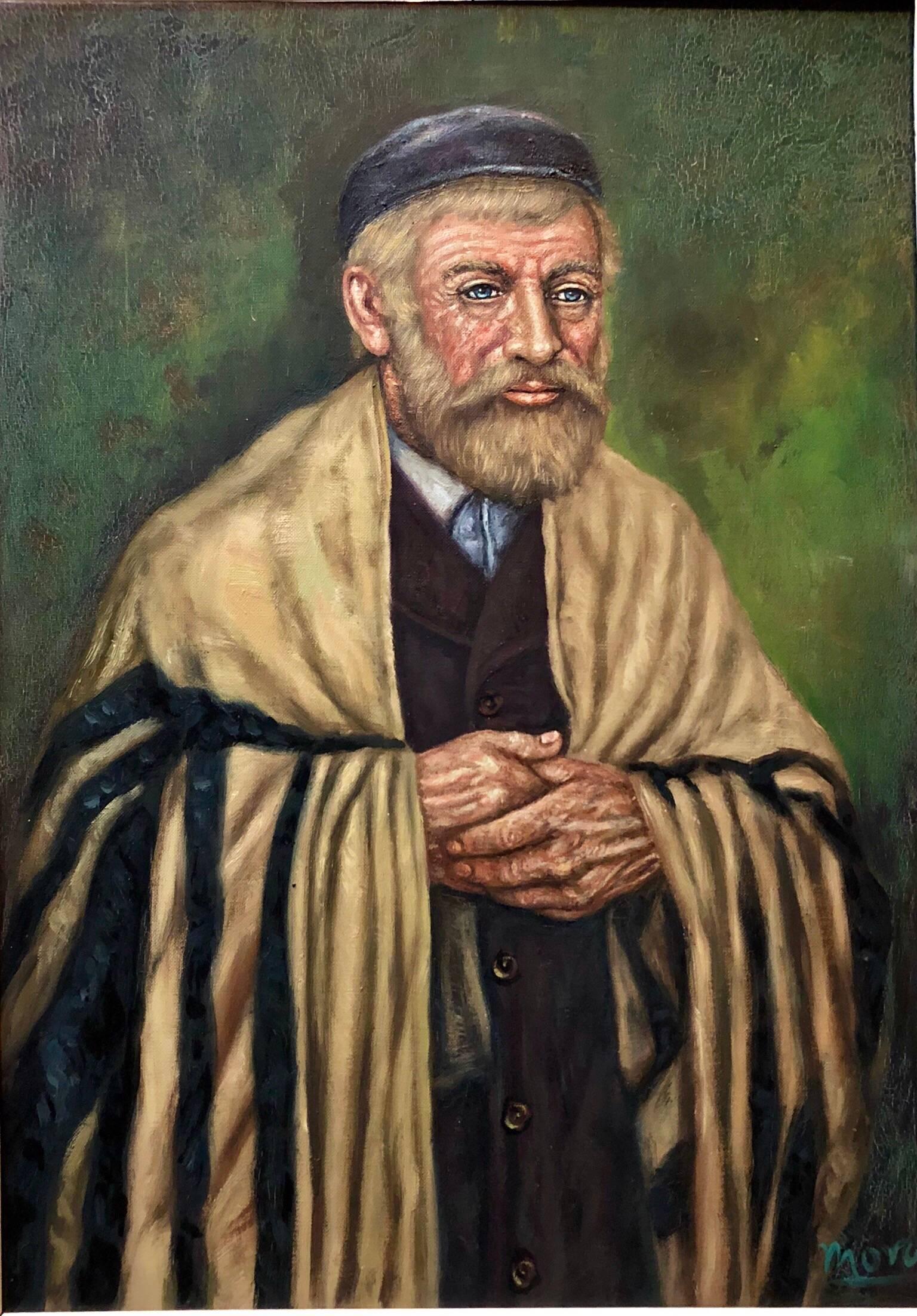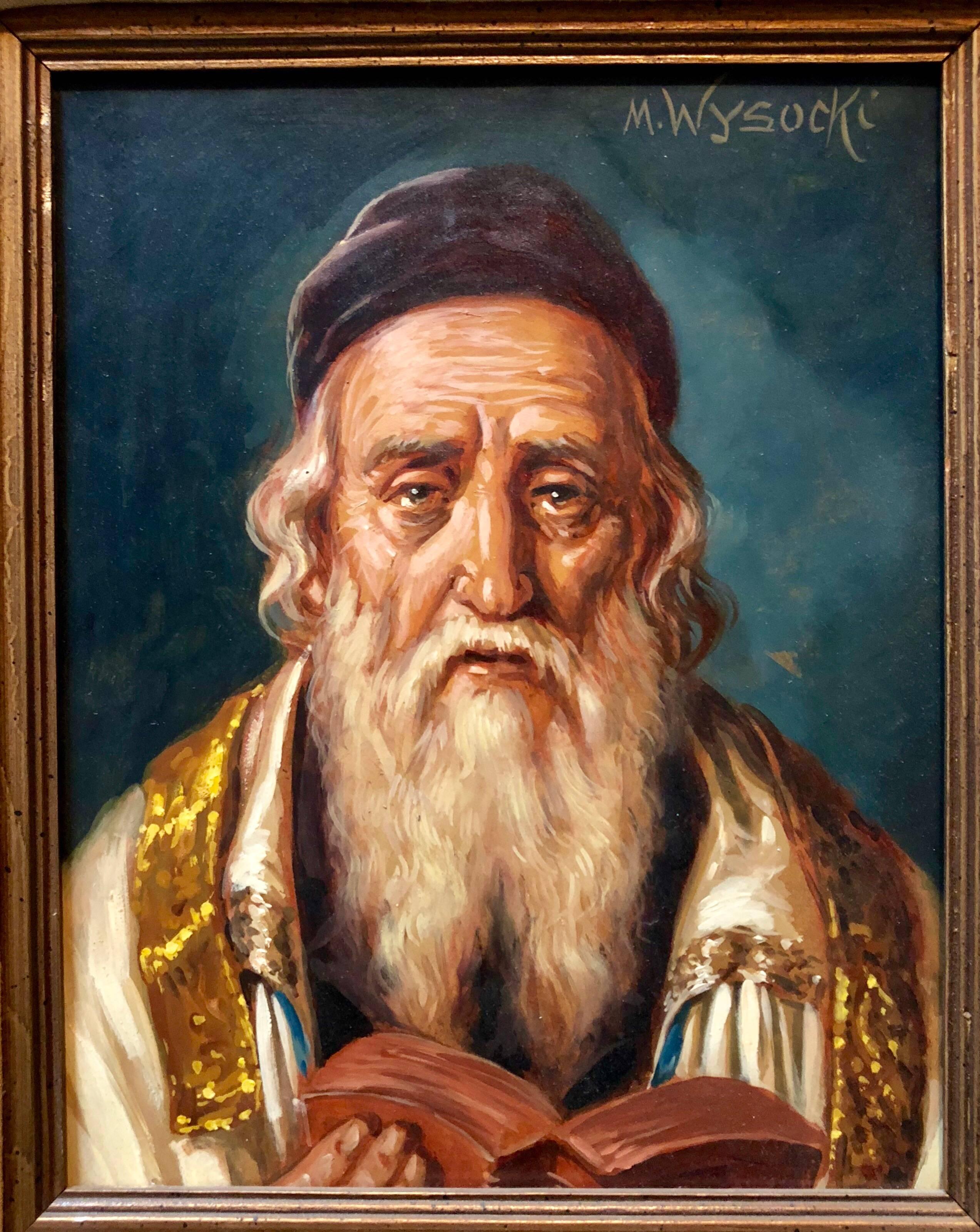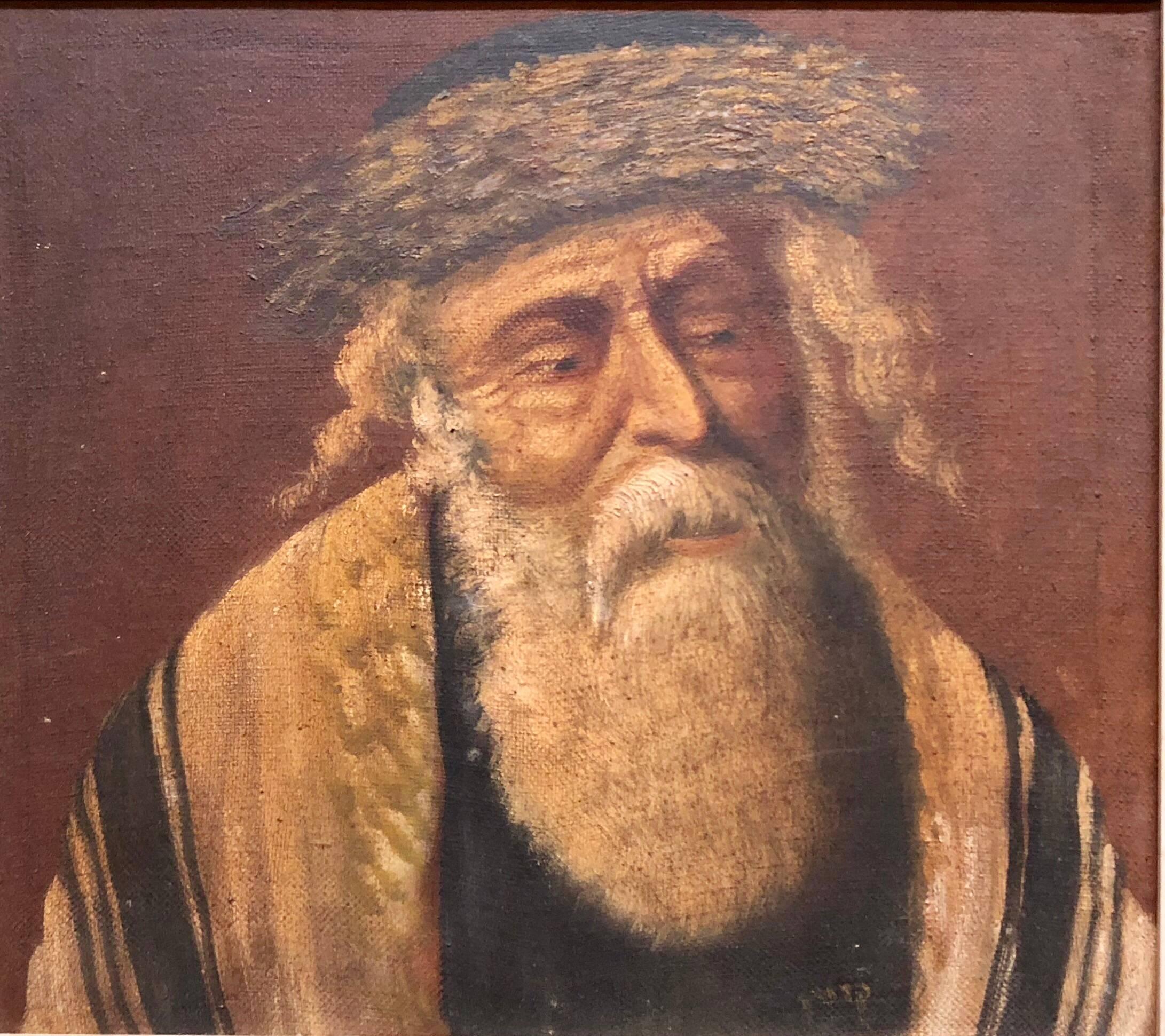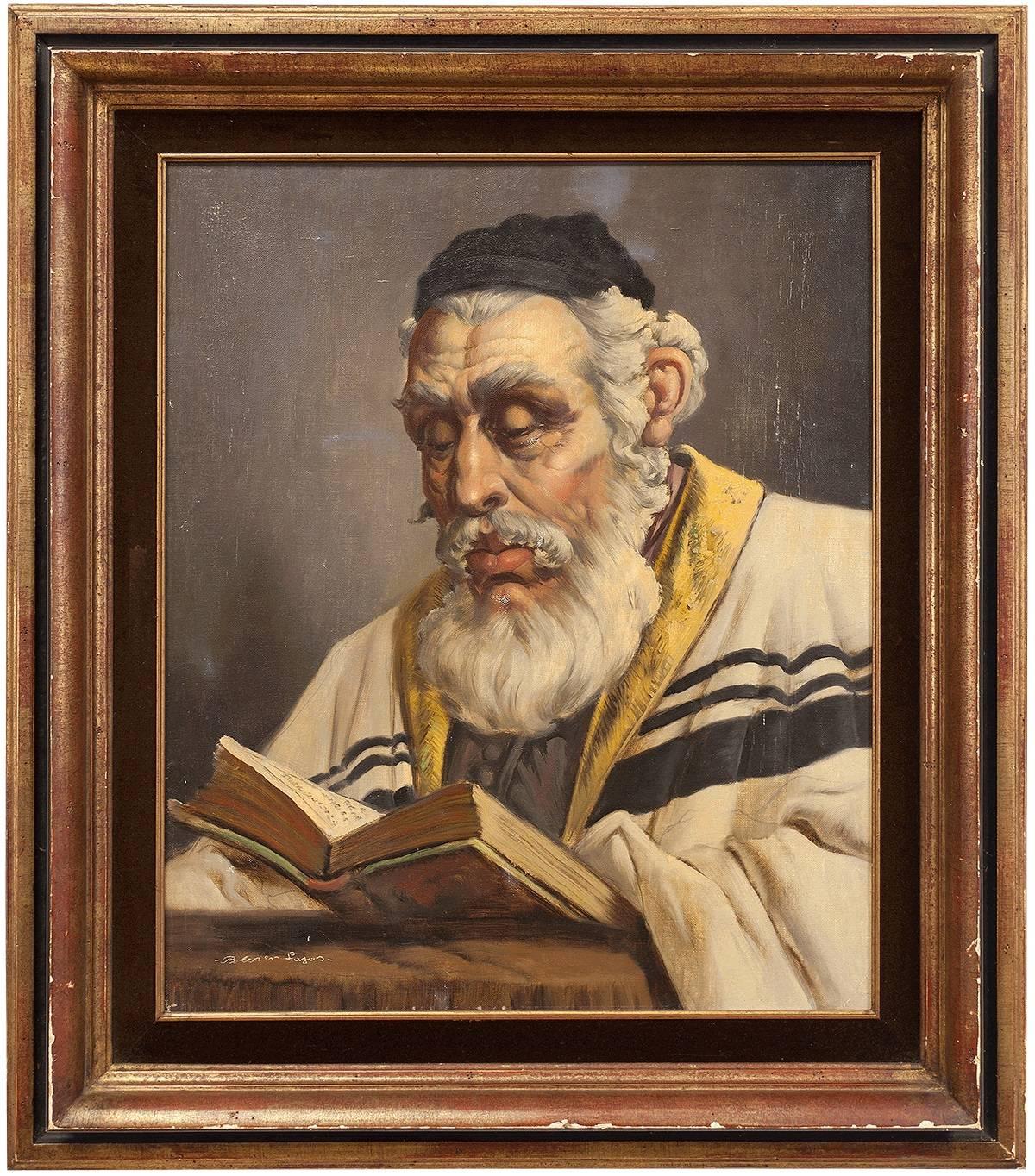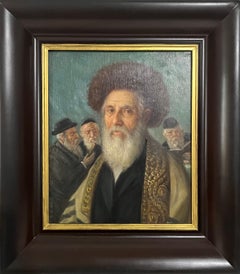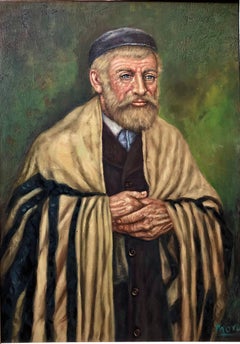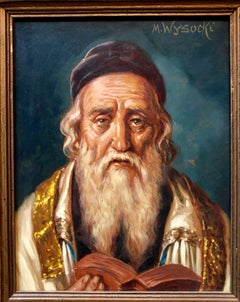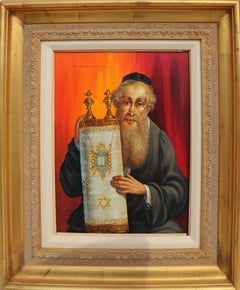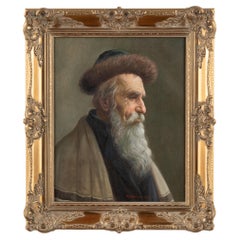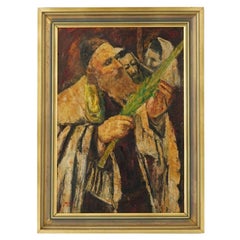Items Similar to Rare Hungarian Jewish Rabbi Judaica Oil Painting Portrait
Want more images or videos?
Request additional images or videos from the seller
1 of 8
Lajos PolczerRare Hungarian Jewish Rabbi Judaica Oil Painting Portraitc.1940's
c.1940's
$2,000
£1,518.65
€1,736.69
CA$2,794.29
A$3,107.86
CHF 1,622.83
MX$37,819.36
NOK 20,725.99
SEK 19,437.32
DKK 12,961.56
Shipping
Retrieving quote...The 1stDibs Promise:
Authenticity Guarantee,
Money-Back Guarantee,
24-Hour Cancellation
About the Item
Rare Pre World War II (Pre Holocaust) Judaica Art. European Judaic art from this period is exceedingly rare.
Polczer was an Hungarian artist, his foundations of painting were taught by a painter Bertalan Karlovszky. His works were exhibited in the National Salon and the Art Hall from 1928. His works are held by the Hungarian National Gallery. In his later years he worked in the United States, he was working in New Orleans, Louisiana in the late 1960s. Known for his Jewish genre scenes, Chess scenes and other early 20th Century salon style nude paintings. In the tradition of Moritz Oppenheim, Isidor Kaufmann and Maurycy Gottlieb and later of Tully Filmus and Itshak Holtz he captures his Jewish interior scenes with a particular sensitivity.
- Creator:Lajos Polczer (1902 - 1968, Hungarian)
- Creation Year:c.1940's
- Dimensions:Height: 26 in (66.04 cm)Width: 22 in (55.88 cm)
- Medium:
- Movement & Style:
- Period:
- Condition:minor wear. minor loss to gilding/plaster tt corners of frame.
- Gallery Location:Surfside, FL
- Reference Number:1stDibs: LU38213383682
About the Seller
4.9
Platinum Seller
Premium sellers with a 4.7+ rating and 24-hour response times
Established in 1995
1stDibs seller since 2014
1,784 sales on 1stDibs
Typical response time: <1 hour
- ShippingRetrieving quote...Shipping from: Surfside, FL
- Return Policy
Authenticity Guarantee
In the unlikely event there’s an issue with an item’s authenticity, contact us within 1 year for a full refund. DetailsMoney-Back Guarantee
If your item is not as described, is damaged in transit, or does not arrive, contact us within 7 days for a full refund. Details24-Hour Cancellation
You have a 24-hour grace period in which to reconsider your purchase, with no questions asked.Vetted Professional Sellers
Our world-class sellers must adhere to strict standards for service and quality, maintaining the integrity of our listings.Price-Match Guarantee
If you find that a seller listed the same item for a lower price elsewhere, we’ll match it.Trusted Global Delivery
Our best-in-class carrier network provides specialized shipping options worldwide, including custom delivery.More From This Seller
View AllPolish Jewish Chassidic Rabbi Judaica Art Oil Painting Konstantin Szewczenko
By Konstanty Szewczenko
Located in Surfside, FL
Konstanty Szewczenko (1910-1991), signed oil Judaica Oil Painting, Chassidic Rebbe, Polish.
Frame: 17 X 15.25
Image: 11.5 X 9.5
Konstantin Shevchenko studied at the Institute of Fine Arts in Warsaw in the years 1927 - 1928. Then, in 1932 he studied painting under the guidance of Kowarski and Pruszkowski at the Warsaw Academy of Fine Arts. Practiced easel painting, mostly judaic hassidic rabbi portraits, genre scenes. Among others, a portrait Moscicki, Rydz - Rydz, and after the war Rokossowski.He worked as a set designer. In the years 1934 - 1935 was production designer Variety Theatre. He collaborated with publishing houses with illustrations. He exhibited in Warsaw, Poland, Vienna, Austria and New York. In 1947 he took part in Exhibition Independent Artists Group) and abroad (solo exhibition at the Gallery G. Tomalsky in New York, 1964) . He is one of many great Jewish Polish artists that included Leopold Gottlieb, Maurycy Gottlieb, Henryk Hechtkopf, Leopold Pilichowski, Isidor Kaufmann, Lazar krestin, Alois Heinrich Priechenfried and Itshak Holtz. His works are in the collection of the Museum of the Polish Army. He was an Polish, Austro-Hungarian painter of Jewish themes...
Category
Mid-20th Century Modern Portrait Paintings
Materials
Canvas, Oil
Oil Painting "The Rabbi" Sensitive Judaica Portrait by Italian American master
By Roberto Lupetti
Located in Surfside, FL
Born in Milan, Italy Lupetti studied at the Royal Academy in Rome where he received classical training and was apprenticed to the school of restoration at the Vatican. At the age of fourteen he was accepted to attend Brera Liceo Artistico, one of the most prestigious art academies in Italy, graduating at age eighteen and then went on to win honors from the Royal Academy of Fine Arts in Rome eventually receiving the degree of Professor of Fine Arts. In Milan, he helped restore the famed La Scala Opera House, and in Rome he earned the right to help in the restoration of the Masters' Works in the Vatican's Sistine Chapel. Following service in WWII, Roberto came to America sponsored by the famous conductor Arturo Toscanini. A painting he did of the maestro was purchased by the San Francisco Art Commission. He moved to San Francisco where he taught at the Art Institute.
As well as decorating churches throughout the U.S., he also painted portraits of such celebrities as Ingrid Bergman, Barbara Stanwyck, and General George Marshall. Roberto Lupetti earned five degrees at the Royal Academy of Fine Arts. Roberto was married to fellow artist Lynn Lupetti...
Category
20th Century Realist Portrait Paintings
Materials
Canvas, Oil
Rare Modernist Judaica Scholar Rabbi in Synagogue Oil Painting Signed Mora
Located in Surfside, FL
a mid century Judaica painting of a Rabbi wearing a Tallit prayer shawl. In the Modernist manner of Maurice Kish, Tully filmus or William Gropper. ...
Category
20th Century Folk Art Portrait Paintings
Materials
Oil
Austrian Judaica Portrait of Hasidic Rabbi Oil Painting
By M Wysocki
Located in Surfside, FL
Realistic portrait of an older rabbi by Polish Austrian artist M. Wysocki. Here the artist conveys a sense of quiet grandeur through the eyes of his subject and the way it's rendered. Part of a distinguished European lineage of Jewish genre artists who depicted judaic scenes sensitively and with a sense of quiet dignity. Lazar Krestin, Isidor Kaufmann...
Category
20th Century Realist Portrait Paintings
Materials
Oil, Panel
Chassidic Rabbi with Shtreimel, Rare Judaica Oil Painting Signed in Hebrew
Located in Surfside, FL
Rare Judaica Art. Jewish genre scene. In the tradition of Moritz Oppenheim, Isidor Kauffman and Maurycy Gottlieb and later of Tully Filmus, Zalman Kle...
Category
Mid-20th Century Post-Impressionist Figurative Paintings
Materials
Oil
Hungarian Rabbi Large Judaica Portrait Oil Painting
Located in Surfside, FL
20th century Jewish Rabbi Portrait, Judaica Oil Painting
Category
20th Century Realist Portrait Paintings
Materials
Canvas, Oil
You May Also Like
Framed Polish Rabbi, Realist Oil Painting by Abraham Straski
By Abraham Straski
Located in Long Island City, NY
Artist: Abraham Straski, Polish (1903 - 1987)
Title: Untitled - Polish Rabbi
Year: 1952
Medium: Oil on Canvas, signed l.r.
Image Size: 16 x 12 inches
Frame Size: 26 x 20 inches
Category
1950s Post-War Portrait Paintings
Materials
Canvas, Oil
Rabbi and Torah, Oil Painting by Abraham Straski
By Abraham Straski
Located in Long Island City, NY
Artist: Abraham Straski, Polish (1903 - 1987)
Title: Rabbi and Torah
Year: circa 1957
Medium: Oil on Canvas, signed l.r.
Image Size: 16 x 12 inches
Frame Size: 26 x 20 inches
Category
1950s Post-War Portrait Paintings
Materials
Canvas, Oil
Oil on Canvas Painting, Portrait of Russian Man, Russia circa 1950-60
Located in Round Top, TX
Original oil on canvas portrait of Russian man wearing hat. Signed, unknown artist.
Canvas is in good condition, minor peelings, craquelure, may benefit from light cleaning.
Any scratches, cracks, dings, or age related separation to frame are reflective of age.
Please refer to professional photos for clear understanding of color, condition and details; photo lighting, individual monitor display and home lighting may all impact how item is viewed.
Measurements are taken at widest points of frame.
With over 37 years of experience selling European antiques, our brick-and-mortar storefront, Round Top Ranch Antiques...
Category
Mid-20th Century Russian Paintings
Materials
Canvas, Wood, Paint
Judaica Portrait Oil Painting of a Rabbi Examining the Lulav Signed Rosendall
Located in Long Island City, NY
An oil painting on canvas representing a Judaica portrait of an old Rabbi, after the original oil painting, Examining the Lulav, . Signed by the artist, Rosendall, lower left. Framed...
Category
Antique 19th Century Unknown Paintings
Materials
Paint
$1,250 Sale Price
50% Off
Rabbi with a Fur Hat, Oil Painting by Jeno Gussich
Located in Long Island City, NY
Artist: Jeno Gussich, Hungarian (1905 - ??)
Title: Rabbi with a Fur Hat
Medium: Oil on Canvas, signed lower right
Size: 24 x 20 inches
Frame Size: 30.5 x...
Category
Mid-20th Century Realist Portrait Paintings
Materials
Oil
Rabbi with Torah, Oil Painting by Abraham Straski 1950
By Abraham Straski
Located in Long Island City, NY
Rabbi with Torah
Abraham Straski, Polish (1903–1987)
Date: 1950
Oil on Canvas on Wood, signed and dated
Size: 16 x 12 in. (40.64 x 30.48 cm)
Frame Size: 19.5 x 15.5 inches
Category
1950s Post-War Portrait Paintings
Materials
Canvas, Oil, Wood
More Ways To Browse
Jewish Mid Century Art
Painting Of Rabbi
Jewish Rabbi Painting
Judaica Oil Painting
Chess Painting
Paintings Of Chess
Hungarian Jewish Paintings
1940s Post Impressionist Oil Painting
Rabbi Oil
Portrait Rabbi
Portrait Of Rabbi
Rabbi Painting Portrait
Oil Painting Of Rabbi
Chess Oil Painting
Portraits Of Jewish Rabbis
Judaica Rabbi Portrait
1960s Chess
Karlovszky Bertalan
